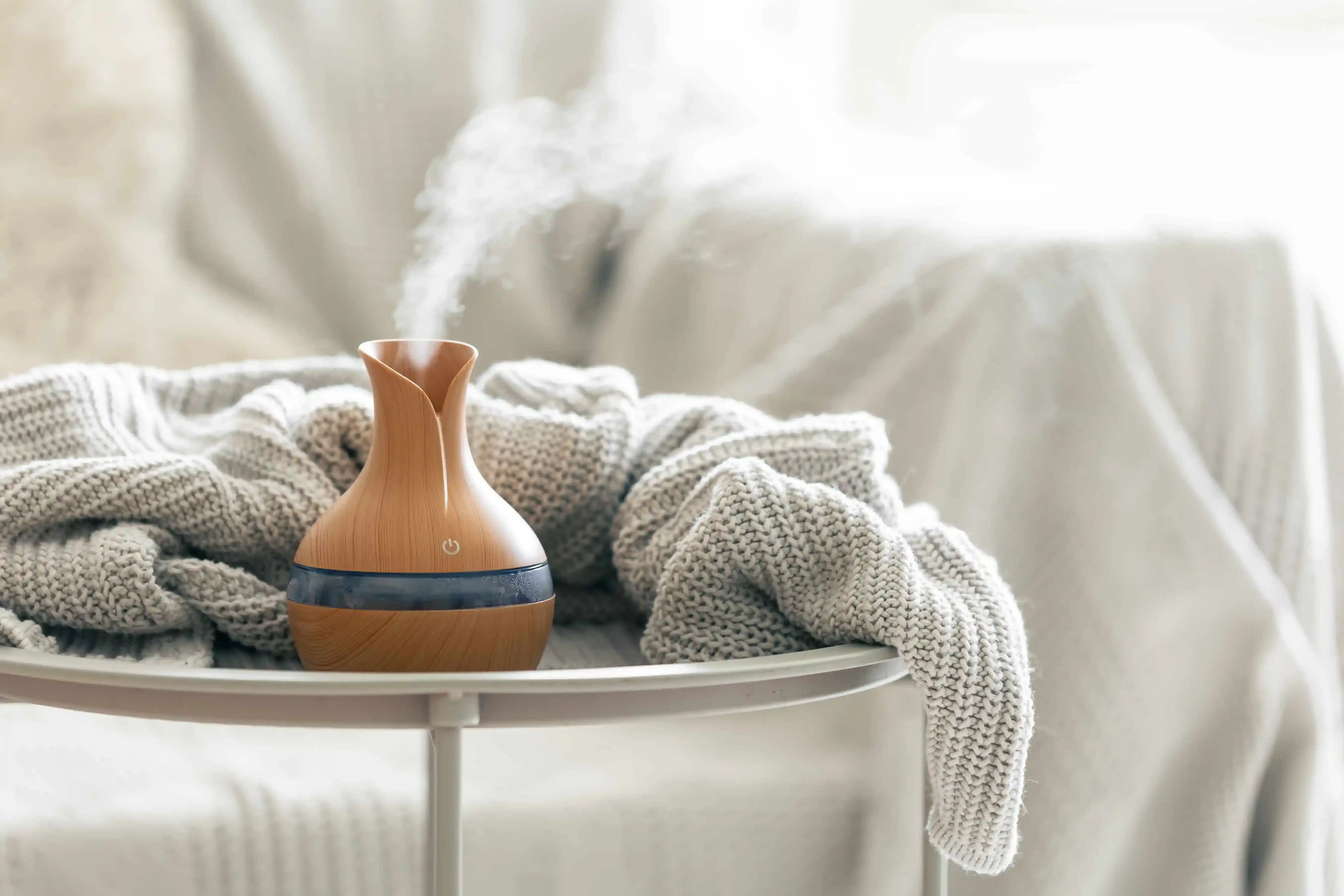Green Elegance: Your Guide to the Best Low-Maintenance Indoor Plants
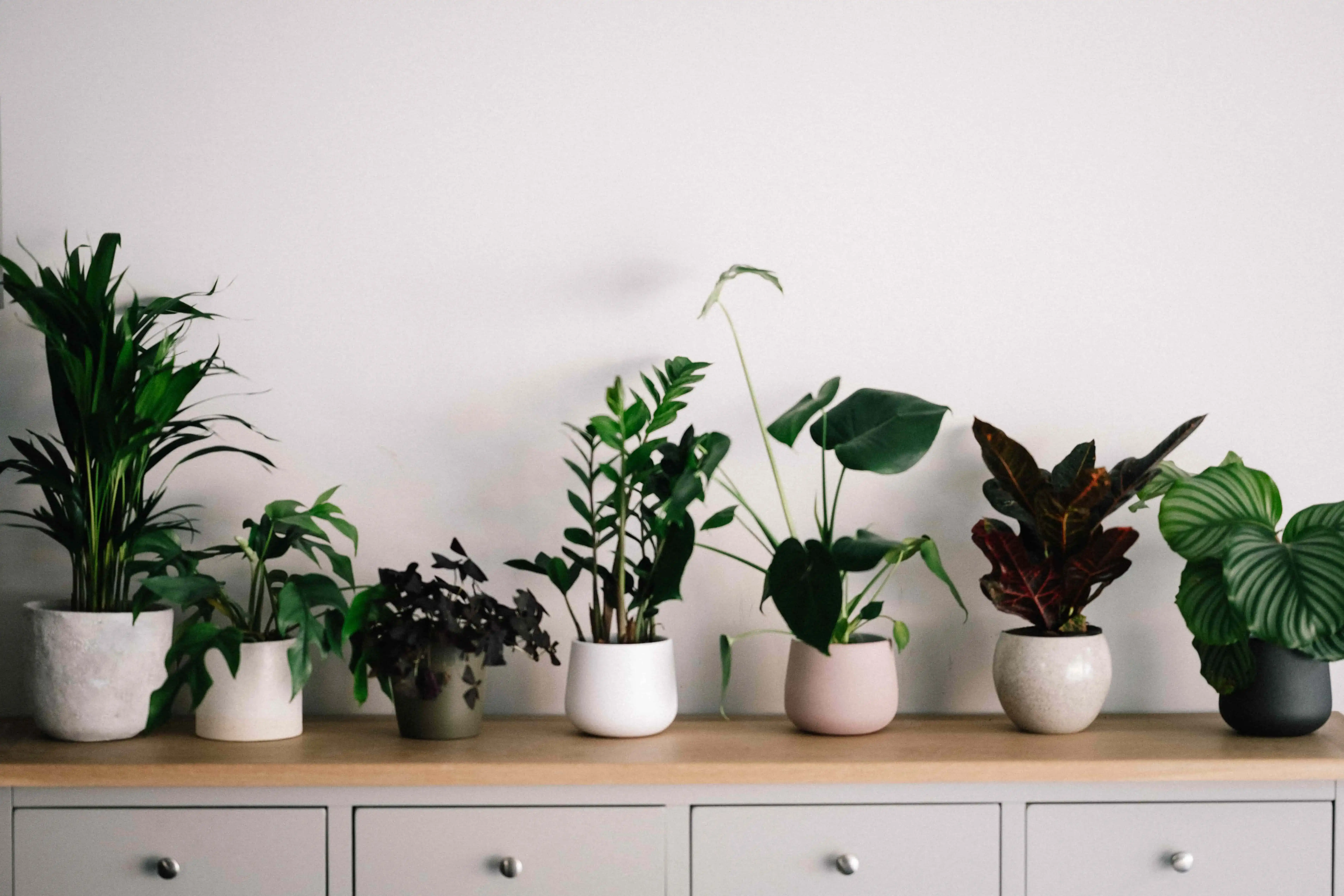
Creating a lush and vibrant indoor oasis doesn't have to be a daunting task. With the right selection of low-maintenance indoor plants, you can effortlessly infuse a breath of fresh air into your living space. In this guide, we'll explore a curated list of the best indoor plants that are not only visually appealing but also easy to care for. Let's embark on a journey of green elegance and transform your home into a thriving botanical haven.
Choosing the Perfect Indoor Companions:
When selecting indoor plants, it's crucial to consider their adaptability to indoor environments. The following selection combines aesthetics with ease of care, ensuring your green companions thrive with minimal effort.
1. Snake Plant (Sansevieria trifasciata):
The Snake Plant, scientifically known as Sansevieria trifasciata, stands as a testament to resilience and elegance. Its architectural leaves, marked with striking patterns, make it a popular choice for both novice and seasoned plant enthusiasts. Not only does the Snake Plant effortlessly enhance the aesthetic appeal of your indoor space, but it's also renowned for its air-purifying qualities. Let's delve deeper into the allure of the Snake Plant and unveil a care routine that ensures its enduring vitality.
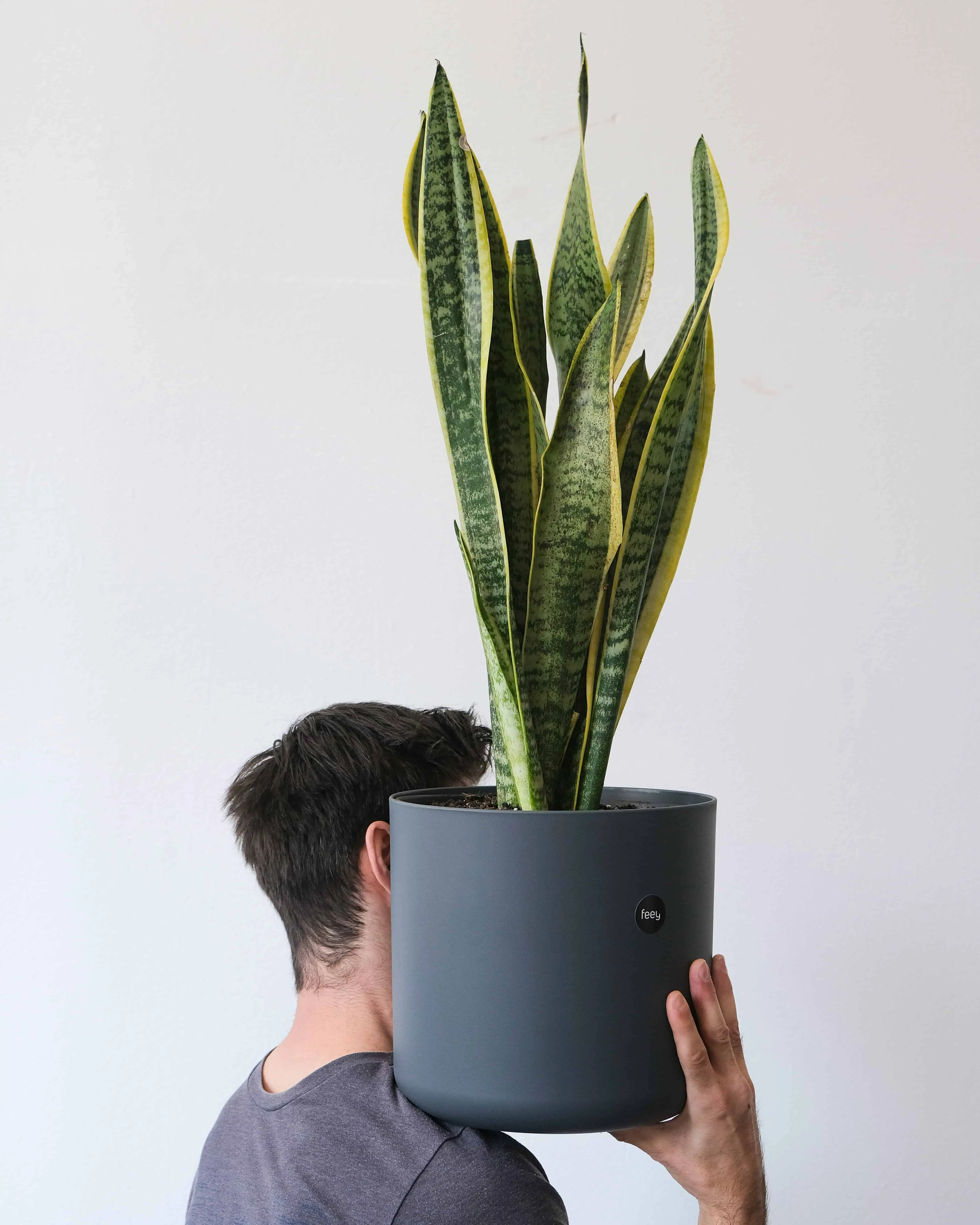
Understanding the Snake Plant:
Native to West Africa, the Snake Plant has adapted to thrive in a variety of conditions, making it an ideal choice for indoor environments. It goes by various names, including Mother-in-Law's Tongue, reflecting its sharp, upright leaves resembling a tongue.
Unique Features:
- Drought Tolerance: One of the standout features of the Snake Plant is its ability to tolerate periods of drought. This makes it an excellent choice for individuals who may not have a green thumb or tend to forget regular watering.
- Air-Purifying Qualities: NASA's Clean Air Study identified the Snake Plant as an effective air purifier, capable of removing toxins like formaldehyde and benzene. Its presence contributes to a healthier indoor atmosphere.
Creating an Ideal Environment:
To ensure your Snake Plant thrives, consider the following care guidelines:
1. Light Conditions:
- Adaptable to Light: Snake Plants are adaptable when it comes to light conditions. While they can tolerate low light, they prefer indirect sunlight. Place them near a window with filtered sunlight for optimal growth.
2. Watering Routine:
- Allow Soil to Dry: One of the key aspects of Snake Plant care is to allow the soil to dry between waterings. These plants are susceptible to root rot in overly damp conditions, so err on the side of underwatering. Water sparingly, especially during the dormant winter months.
- Water Quality: Use well-draining soil, and ensure that the pot has drainage holes to prevent waterlogging. The Snake Plant prefers slightly dry conditions and is more forgiving of underwatering than overwatering.
2. Spider Plant (Chlorophytum comosum):
The Spider Plant, scientifically known as Chlorophytum comosum, is a beacon of grace and vitality in the realm of indoor plants. Characterized by arching leaves that resemble spider legs, this resilient plant is a popular choice for homes and offices alike. Beyond its aesthetic appeal, the Spider Plant boasts air-purifying qualities, making it a welcome addition to any indoor space. Let's explore the captivating features of the Spider Plant and unveil a comprehensive care routine to ensure its enduring elegance.
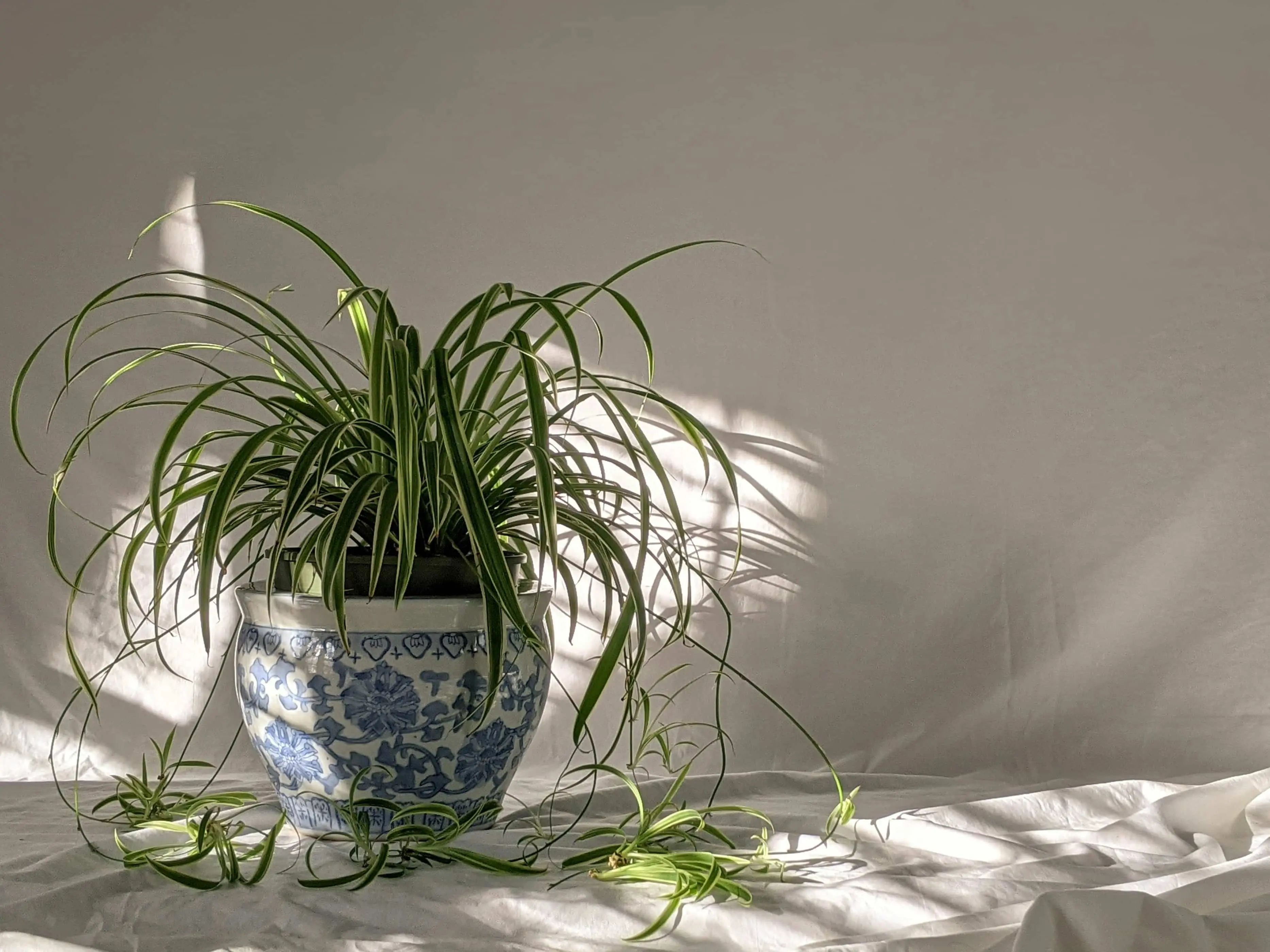
Discovering the Spider Plant:
Originating from South Africa, the Spider Plant has garnered popularity for its adaptability and ease of care. Its long, arching leaves with variegated stripes contribute to its distinctive charm, earning it common names like Airplane Plant or Ribbon Plant.
Key Features:
- Air-Purifying Powerhouse: The Spider Plant is recognized for its ability to purify indoor air by removing pollutants such as formaldehyde and xylene. Its presence contributes to a healthier and more refreshing environment.
- Prolific Offspring: Spider Plants produce offshoots known as "pups" or "spiderettes" that dangle from long stems. These can be propagated to create new plants, enhancing the overall lushness of your indoor collection.
Crafting an Ideal Habitat:
To ensure your Spider Plant thrives, it's essential to create a conducive environment that aligns with its preferences.
1. Light Conditions:
- Adaptable to Light: Spider Plants are adaptable and can thrive in various light conditions. While they prefer bright, indirect light, they can tolerate lower light levels. Avoid placing them in direct sunlight, as this can scorch their leaves.
2. Watering Wisdom:
- Even Moisture: Spider Plants appreciate consistently moist but not waterlogged soil. Water them thoroughly when the top inch of the soil feels dry. Adjust your watering frequency based on the environmental conditions and the plant's growth phase.
- Avoid Overwatering: Overwatering can lead to root rot, so it's crucial to strike a balance. Ensure proper drainage in the pot and empty the saucer beneath the plant after watering to prevent water accumulation.
3. ZZ Plant (Zamioculcas zamiifolia):
The ZZ Plant, scientifically known as Zamioculcas zamiifolia, is a botanical marvel that brings an air of sophistication to indoor spaces. Revered for its glossy, dark green leaves and exceptional resilience, the ZZ Plant is a favorite among plant enthusiasts, both seasoned and novice. In this exploration, let's unravel the distinctive features of the ZZ Plant and craft a care routine guide that ensures its enduring elegance in your home.
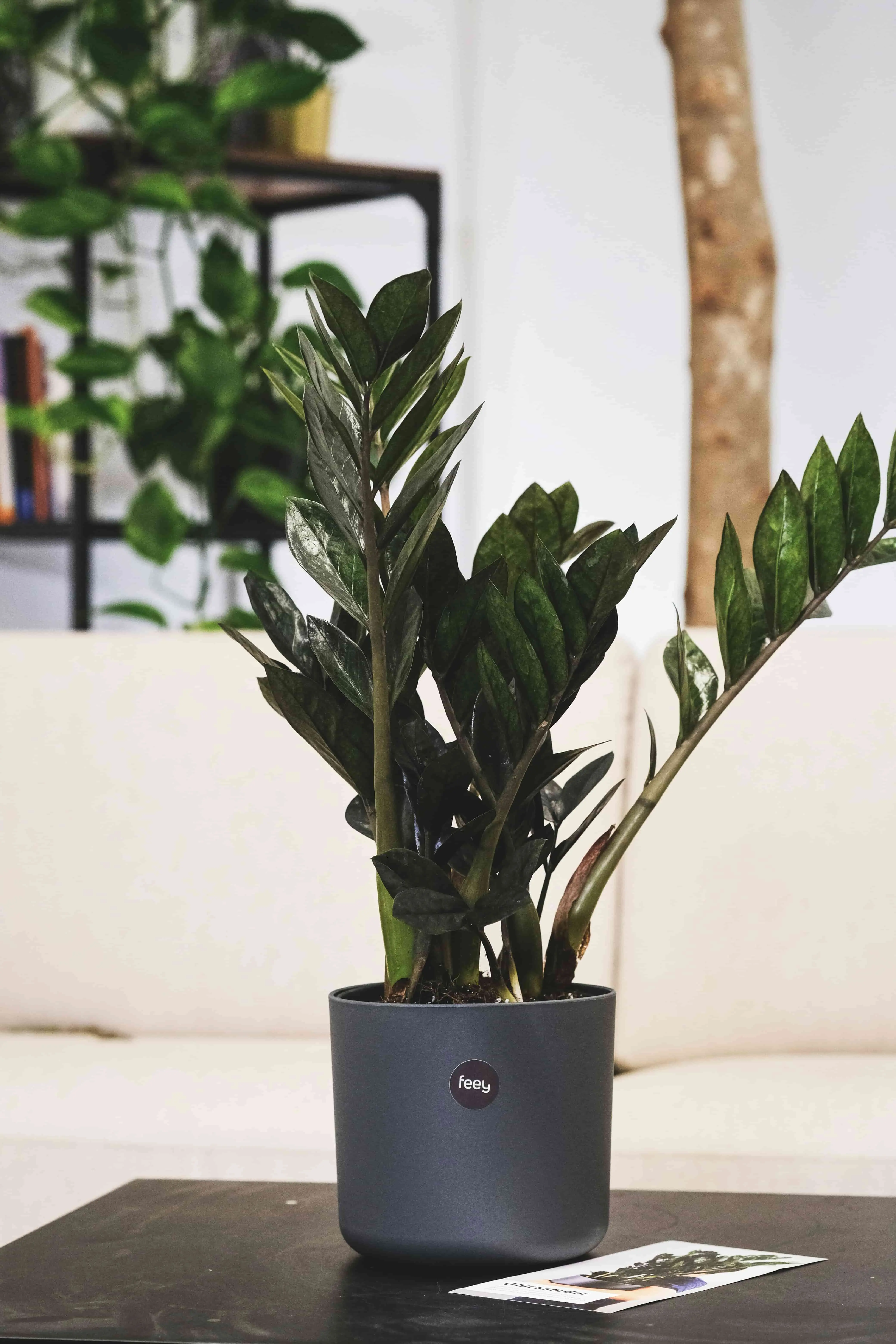
Exploring the ZZ Plant:
Originating from Eastern Africa, particularly Zanzibar, the ZZ Plant has earned its place as a go-to choice for low-maintenance greenery. Its unique characteristics contribute to its popularity:
Key Attributes:
- Adaptability to Low Light: The ZZ Plant thrives in low-light conditions, making it an ideal candidate for spaces with minimal natural sunlight.
- Drought Tolerance: Known for its ability to withstand periods of drought, the ZZ Plant is a resilient choice for individuals who may not adhere to strict watering schedules.
Crafting an Ideal Environment:
To fully appreciate the ZZ Plant's elegance, it's essential to create a conducive environment that aligns with its preferences.
1. Light Conditions:
- Adaptable to Low Light: ZZ Plants can tolerate low light conditions, making them suitable for offices, bathrooms, or areas with limited sunlight. While they can thrive in bright, indirect light, they also endure in low-light settings.
- Avoid Direct Sunlight: ZZ Plants are sensitive to direct sunlight, which can scorch their leaves. It's advisable to place them in locations with filtered or indirect light.
2. Watering Wisdom:
- Infrequent Watering: ZZ Plants have a natural tolerance for drought. Water them sparingly and allow the soil to dry out between waterings. Overwatering can lead to root rot, so err on the side of underwatering.
- Well-Draining Soil: Use a well-draining potting mix to prevent waterlogged roots. The ZZ Plant's rhizomes store water, reducing their dependence on frequent watering.
4. Pothos (Epipremnum aureum):
The Pothos, scientifically known as Epipremnum aureum, emerges as a versatile and charming addition to indoor spaces. Recognized for its heart-shaped leaves and cascading vines, this plant is a favorite among plant enthusiasts for its adaptability and low-maintenance nature. In this exploration, let's dive deeper into the enchanting world of Pothos, unveiling its distinctive features and crafting a care routine guide to ensure its continuous vibrancy in your home.
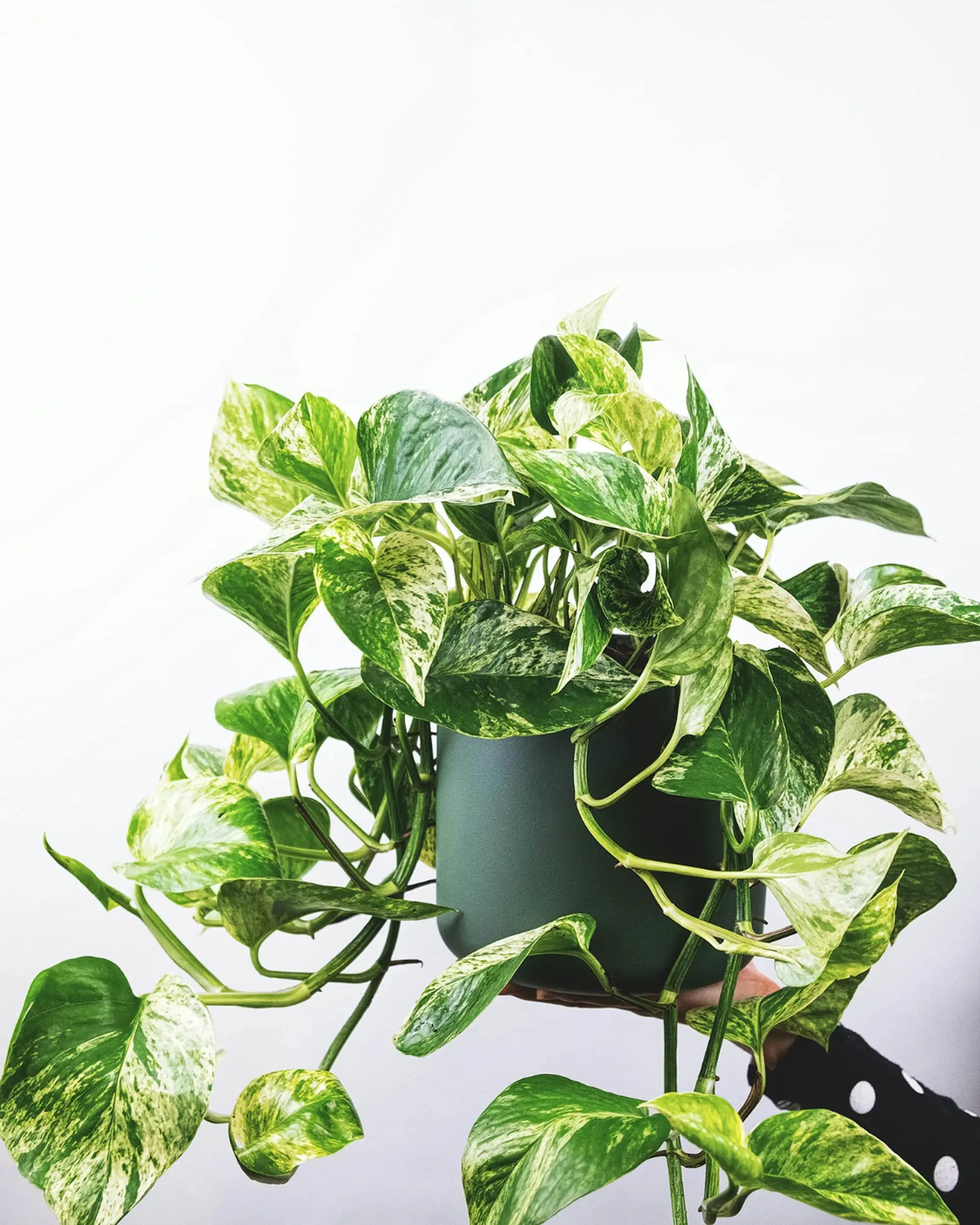
Unveiling the Pothos Charm:
Originating from the Solomon Islands, the Pothos is celebrated for its ability to thrive in various conditions. Its allure lies in:
Key Attributes:
- Adaptability to Light: Pothos plants can thrive in a range of light conditions, making them suitable for both well-lit and low-light spaces.
- Air-Purifying Qualities: Pothos is recognized for its air-purifying capabilities, aiding in removing common indoor pollutants and promoting a healthier living environment.
- Versatility in Watering: With its forgiving nature, the Pothos can tolerate occasional lapses in watering, making it an excellent choice for those with varying watering routines.
Crafting an Ideal Environment:
To harness the full beauty of the Pothos, it's crucial to create a conducive environment that aligns with its preferences.
1. Light Conditions:
- Adaptable to Light: Pothos plants are versatile when it comes to light. While they can thrive in bright, indirect light, they also endure in low-light conditions. Avoid direct sunlight, as it can scorch their leaves.
- Varied Placement: Consider placing Pothos in different parts of your home, from well-lit living rooms to corners with limited sunlight. Their adaptability makes them an ideal choice for various spaces.
2. Watering Wisdom:
- Even Moisture: Pothos appreciates consistently moist soil but not waterlogged conditions. Water the plant when the top inch of the soil feels dry to the touch.
- Adjust to Environment: The frequency of watering may vary based on factors such as temperature, humidity, and the specific environment. Adjust your watering routine accordingly to maintain optimal moisture levels.
5. Peace Lily (Spathiphyllum):
The Peace Lily, scientifically known as Spathiphyllum, is a captivating plant that embodies both grace and tranquility. Renowned for its elegant white blooms and rich green foliage, the Peace Lily is more than a decorative accent; it's a symbol of purity and harmony. In this exploration, let's delve into the enchanting world of the Peace Lily, uncovering its unique characteristics, and crafting a comprehensive care routine guide to ensure its continuous blossoming in your home.
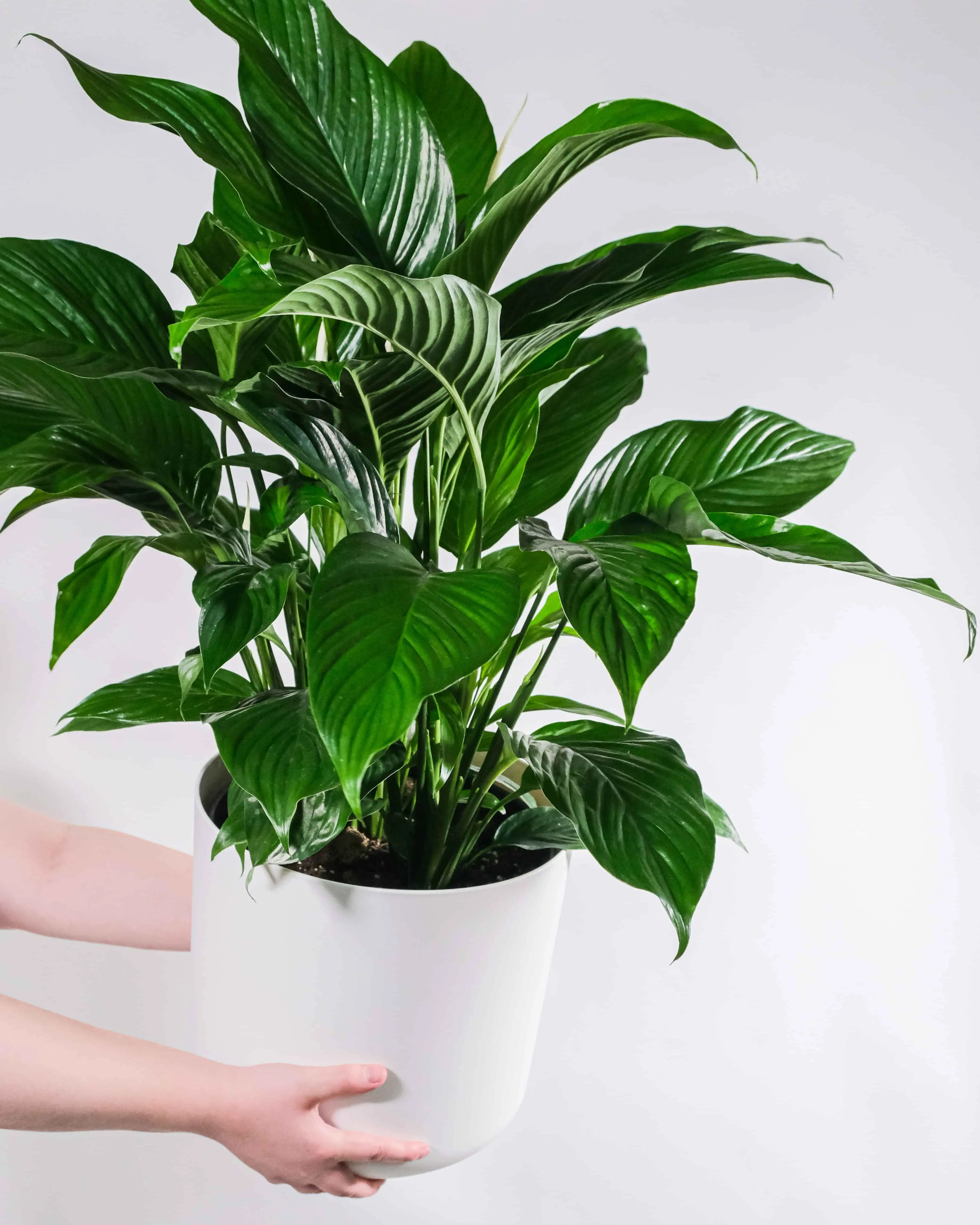
Discovering the Peace Lily's Grace:
Originating from the tropical regions of the Americas and Southeast Asia, the Peace Lily captivates with its refined features and symbolic significance:
Key Features:
- Graceful White Blooms: The Peace Lily is celebrated for its pristine white flowers, or spathes, that gracefully unfurl amidst lush green leaves. These blooms exude a sense of serenity and purity.
- Air-Purifying Prowess: With a notable ability to cleanse indoor air by removing pollutants such as formaldehyde, benzene, and ammonia, the Peace Lily contributes to a healthier and more breathable living space.
- Adaptable to Low Light: Thriving in low-light conditions, the Peace Lily is well-suited for spaces with filtered or indirect sunlight. Its versatility makes it a popular choice for various indoor settings.
Crafting an Ideal Environment:
To foster the optimal growth and blossoming of the Peace Lily, creating a conducive environment is essential.
1. Light Conditions:
- Adaptability to Low Light: Peace Lilies can thrive in low to moderate light conditions. While they prefer bright, indirect light, they also endure in lower light levels. Avoid exposing them to direct sunlight, as this can scorch their leaves.
- Filtered Sunlight: Place Peace Lilies near windows with sheer curtains or in areas where they receive filtered sunlight. This mimics their natural habitat under the canopy of larger plants in the tropics.
2. Watering Wisdom:
- Consistent Moisture: Peace Lilies prefer consistently moist soil. Water them when the top inch of the soil feels slightly dry to the touch. Ensure the soil is well-draining to prevent waterlogging.
- Wilting Indicator: The Peace Lily has a unique way of indicating when it needs water – the leaves will droop. Watering promptly when you notice this wilting ensures the plant recovers quickly.
Conclusion: A Flourishing Indoor Haven
By incorporating these easy-care indoor plants into your living space and following these simple care steps, you'll cultivate a lush and thriving indoor haven. The green elegance of these plants not only enhances your home's aesthetic appeal but also contributes to a healthier and more vibrant living environment. Embrace the joy of indoor gardening and revel in the beauty of effortlessly cared-for green companions. Happy planting!
